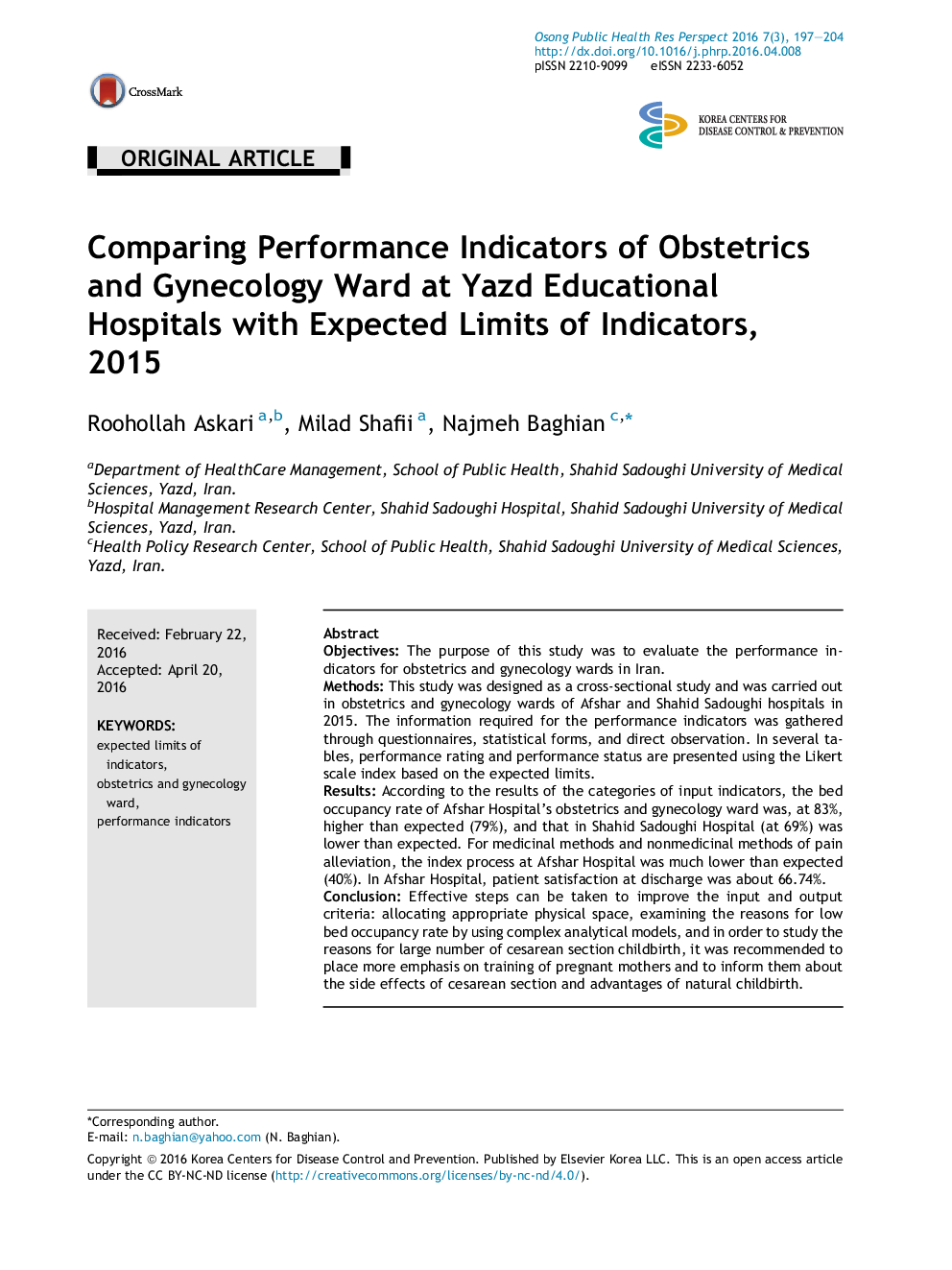| Article ID | Journal | Published Year | Pages | File Type |
|---|---|---|---|---|
| 4201857 | Osong Public Health and Research Perspectives | 2016 | 8 Pages |
ObjectivesThe purpose of this study was to evaluate the performance indicators for obstetrics and gynecology wards in Iran.MethodsThis study was designed as a cross-sectional study and was carried out in obstetrics and gynecology wards of Afshar and Shahid Sadoughi hospitals in 2015. The information required for the performance indicators was gathered through questionnaires, statistical forms, and direct observation. In several tables, performance rating and performance status are presented using the Likert scale index based on the expected limits.ResultsAccording to the results of the categories of input indicators, the bed occupancy rate of Afshar Hospital’s obstetrics and gynecology ward was, at 83%, higher than expected (79%), and that in Shahid Sadoughi Hospital (at 69%) was lower than expected. For medicinal methods and nonmedicinal methods of pain alleviation, the index process at Afshar Hospital was much lower than expected (40%). In Afshar Hospital, patient satisfaction at discharge was about 66.74%.ConclusionEffective steps can be taken to improve the input and output criteria: allocating appropriate physical space, examining the reasons for low bed occupancy rate by using complex analytical models, and in order to study the reasons for large number of cesarean section childbirth, it was recommended to place more emphasis on training of pregnant mothers and to inform them about the side effects of cesarean section and advantages of natural childbirth.
